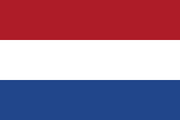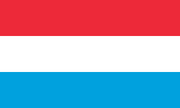| Greater German Reich Großdeutsches Reich Timeline: Hitler's Win
OTL equivalent: Germany, Adygea, Alsace-Lorraine, Austria, Belarus, Belgium, Bryansk Oblast, Crimea, Estonia, Kaliningrad Oblast, Krasnodar Krai, Latvia, Liechtenstein, Lithuania, Luxembourg, Netherlands, Nord and Pas-de-Calais, Poland, Northern Schleswig, Rostov Oblast, Saratov Oblast, Switzerland, Sevastopol, Volgograd Oblast | ||||||
|---|---|---|---|---|---|---|
|
||||||
| Motto: Ein Volk, ein Reich, ein Kaiser |
||||||
| Motto: One People, One Reich, One Emperor |
||||||
| Anthem: Das Lied der Deutschen ("The Song of the Germans") Horst-Wessel-Lied ("The Horst Wessel Song") |
||||||
| Capital (and largest city) | Germania | |||||
| Official languages | German | |||||
| Demonym | German | |||||
| Government | Federal semi-constitutional monarchy
|
|||||
| - | Kaiserin | Mathilde I | ||||
| - | Reichskanzler | Frauke Petry | ||||
| - | Upper house | Reichsrat | ||||
| - | Lower house | Reichstag | ||||
| Establishment | ||||||
| - | Charlemagne is crowned Emperor of the Romans | 25 December 800 | ||||
| - | Holy Roman Empire | 2 February 962 | ||||
| - | German Confederation | 8 June 1815 | ||||
| - | Unification | 18 January 1871 | ||||
| - | Enabling Act | 23 March 1933 | ||||
| Area | ||||||
| - | 1,789,308.27 km2 [a] 690,855.785 sq mi |
|||||
| Population | ||||||
| - | 2022 estimate | 200,746,366 | ||||
| Currency | Reichsmark | |||||
| Drives on the | Right | |||||
| 1 |
|
|||||
Germany, officially Greater German Reich (German: Großdeutsches Reich) from 1871 until 1940 German Reich (German: Deutsches Reich) is a country in Central Europe.
The German Empire was proclaimed on 18 January 1871, in the Hall of Mirros in the Palace of Versailles in the aftermath of the Franco-Prussian War, with Wilhelm I, King of Prussia as German Emperor. The German Empire consisted of thirty-six constituent states, each with its own nobility, eight kingdoms, seven grand duchies, six duchies, seven principalities, four free cities and four imperial territories. Furthermore, as the main victor of the World War II, Germany controls a vast overseas empire with colonial holding in Africa, Asia, and the Pacific.
Germany is bordered on the north by Denmark, the North Sea, and the Baltic Sea, to the northeast by the Russian Empire, to the east by the Ukrainian State, to the southwest by Romania, Hungary, and Slovak State, to the south by Yugoslavia, the State of Italy, to the west by the French State. Through Gotenland, Germany is bordered to the north by the Ukrainian State, to the east and south by the Black Sea, and to the northeast by the Sea of Azov.
History[]
Background[]
Third Reich[]
Seizure and Gleichschaltung[]
Although the National Socialists won the greatest share of the popular vote in the two Reichstag general elections of 1932, they did not have a majority. Hitler refused to participate in a coalition government unless he was its leader. Kaiser Wilhelm II appointed Hitler as Chancellor of the Reich on 30 January 1933. This event is known as the Machtergreifung ("seizure of power").
On the night of 27 February 1933, the Reichstag building was set afire. Marinus van der Lubbe, a Dutch communist, was found guilty of starting the blaze. Hitler proclaimed that the arson marked the start of a communist uprising. The Reichstag Fire Decree, imposed on 28 February 1933, rescinded most civil liberties, including rights of assembly and freedom of the press. The decree also allowed the police to detain people indefinitely without charges. The legislation was accompanied by a propaganda campaign that led to public support for the measure. Violent suppression of communists by the SA was undertaken nationwide and 4,000 members of the Communist Party of Germany were arrested.
On 23 March 1933, the Reichstag and Reichsrat passed the Enabling Act, allowing the cabinet to pass laws—even laws that violated the constitution. As the act required a two-thirds majority to pass, the Nazis used intimidation tactics as well as the provisions of the Reichstag Fire Decree to keep several Social Democratic deputies from attending, and the Communists had already been banned.
Consolidation[]
World War II[]
Post war[]
Geography[]
Constituent states[]
Kingdoms[]
Grand Duchies[]
Duchies[]
Principalities[]
City-states[]
Imperial Territories[]
|
State |
Capital | Ruler | Flag | Coat of Arms |
|---|---|---|---|---|
| Imperial Territory of Alsace-Lorraine | Straßburg | 
|

| |
| Gotenland | Sebastopol | 
|

| |
| Trentino-South Tyrol | Bozen | 
|
||
| Volgaland | Kosakenburg | 
|
Territorial changes[]
As a result of their defeat in World War I and the resulting Treaty of Versailles, Germany lost Alsace-Lorraine, Northern Schleswig, and Memel. The Saarland became a protectorate of France under the condition that its residents would later decide by referendum which country to join, and Poland became a separate nation and was given access to the sea by the creation of the Polish Corridor, which separated Prussia from the rest of Germany, while Danzig was made a free city.
Germany regained control of the Saarland through a referendum held in 1935 and annexed Austria in the Anschluss of 1938. The Munich Agreement of 1938 gave Germany control of the Sudetenland, and they seized the remainder of Czechoslovakia six months later. Under threat of invasion by sea, Lithuania surrendered the Memel Territory in March 1939.
In World War II Germany annexed Poland, Belgium, Luxembourg, the Netherlands, Switzerland, the Baltic states, northern Yugoslavia, southern Denmark, Trieste, South Tyrol and Istria.



















































































